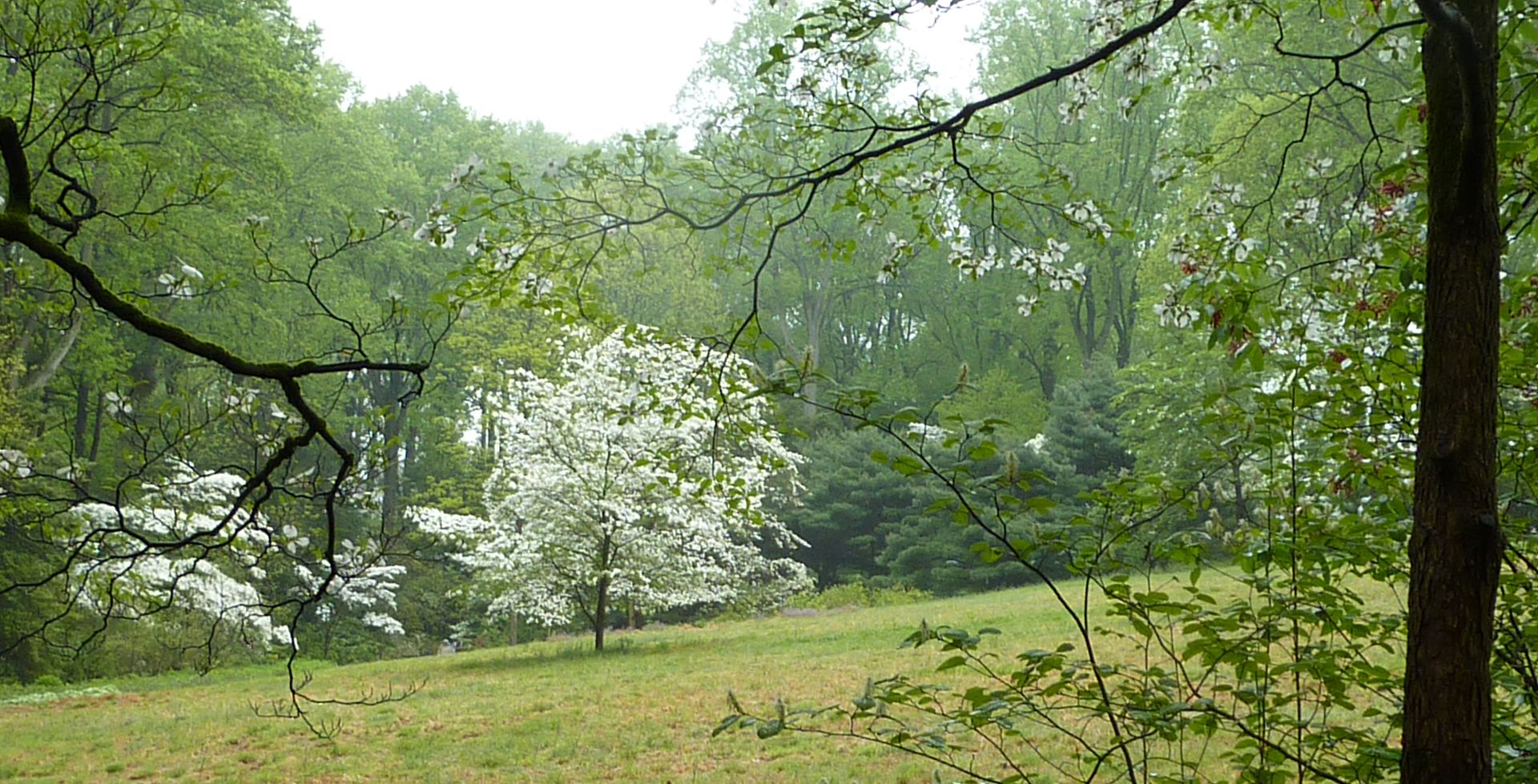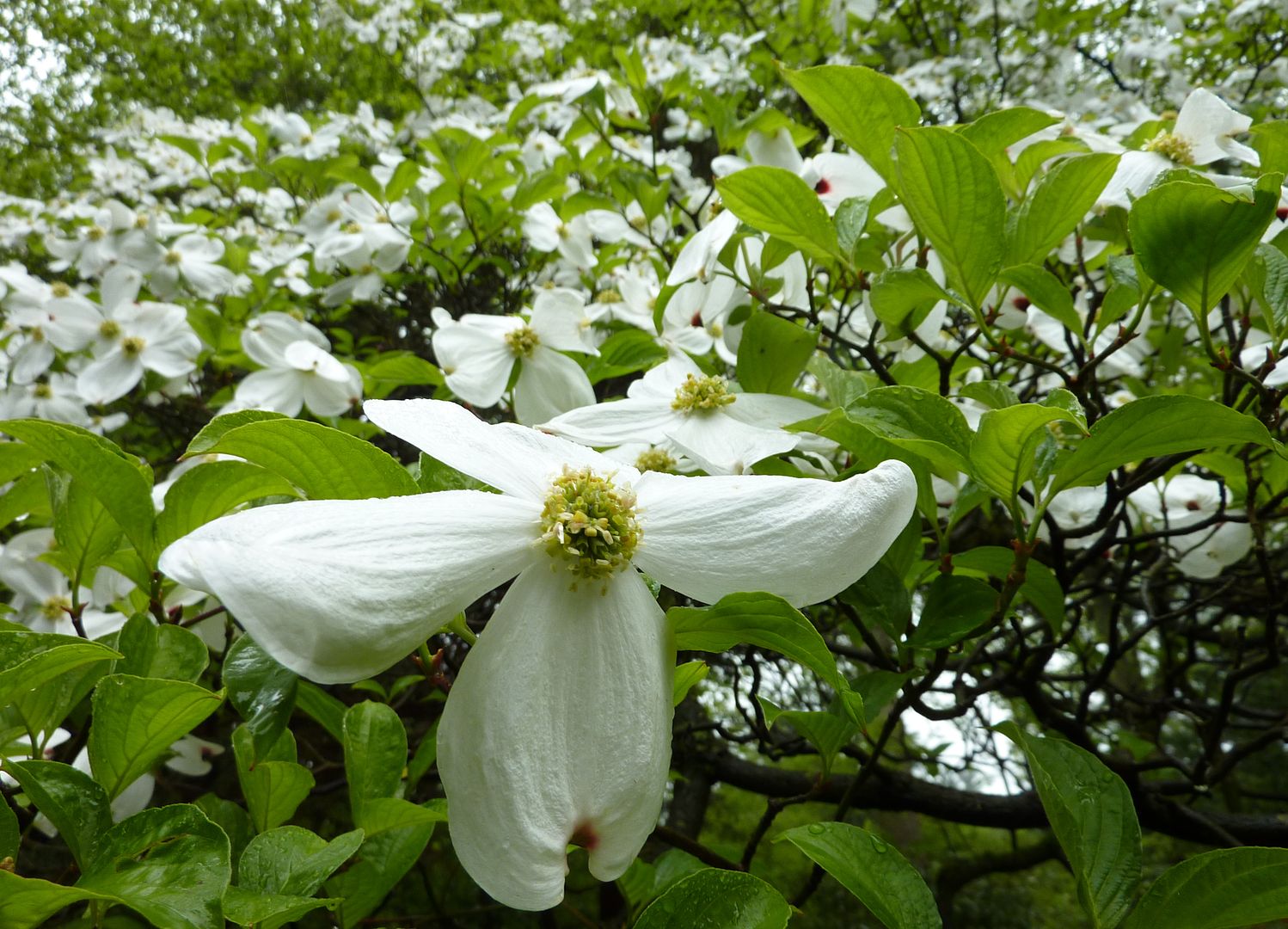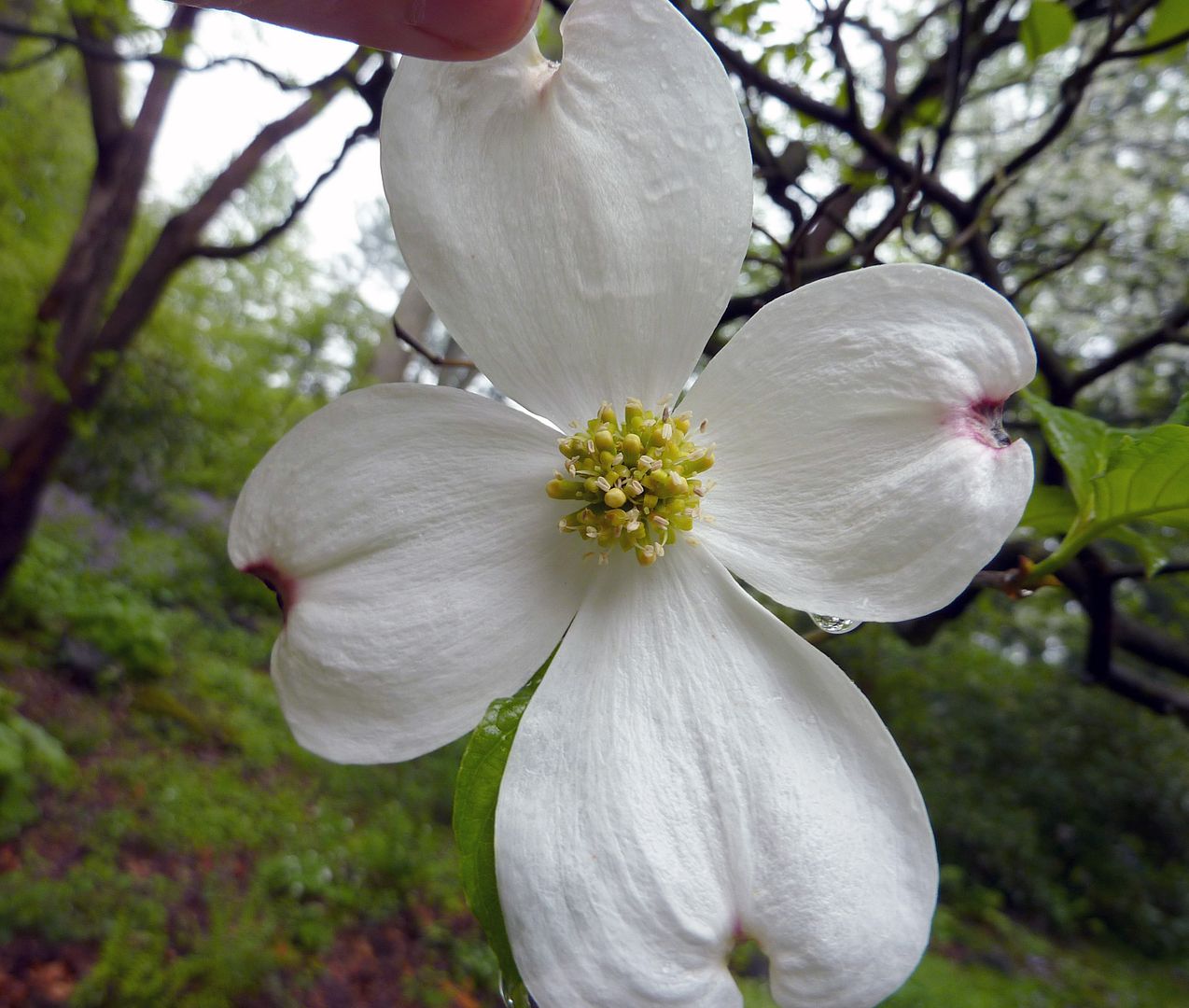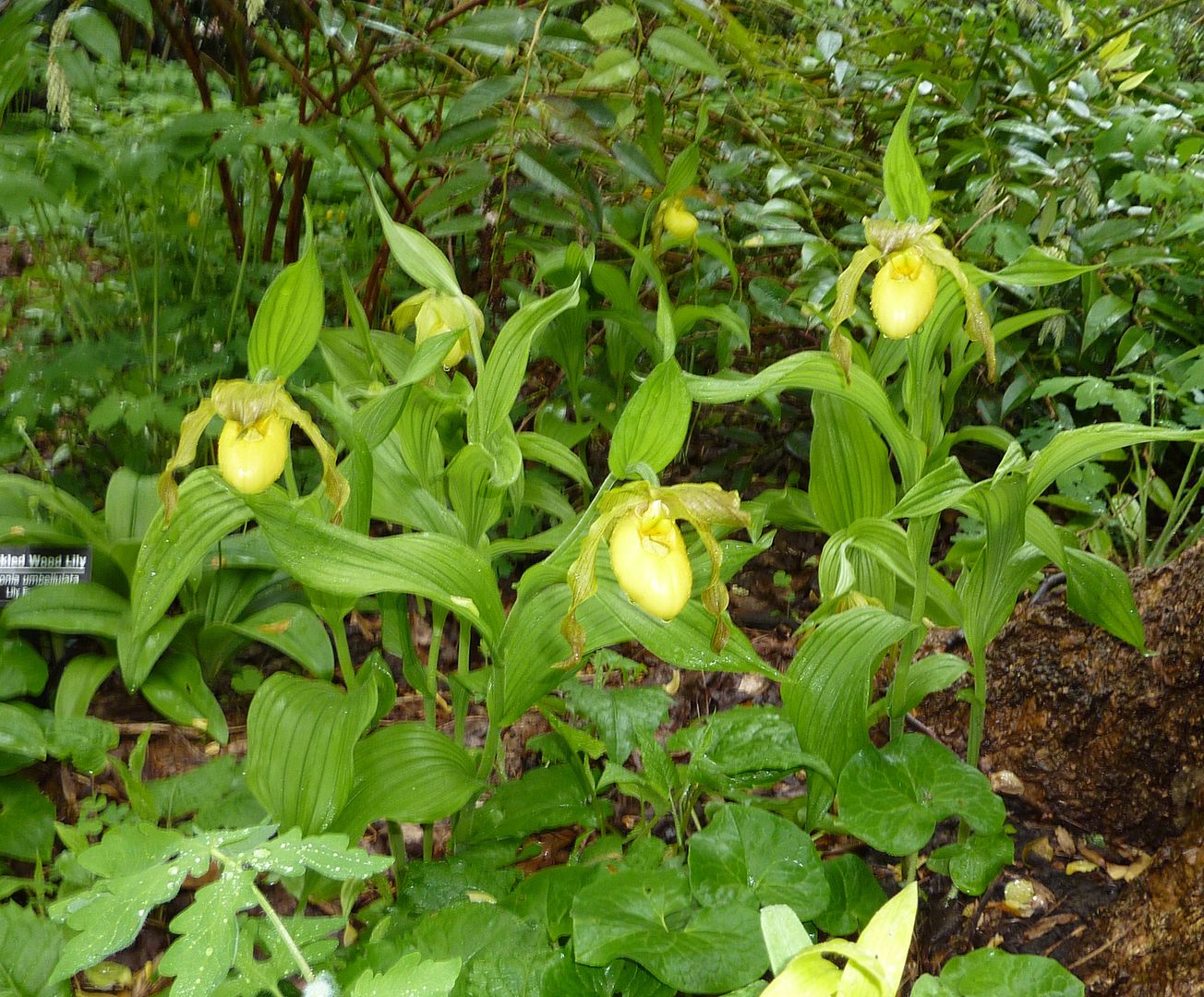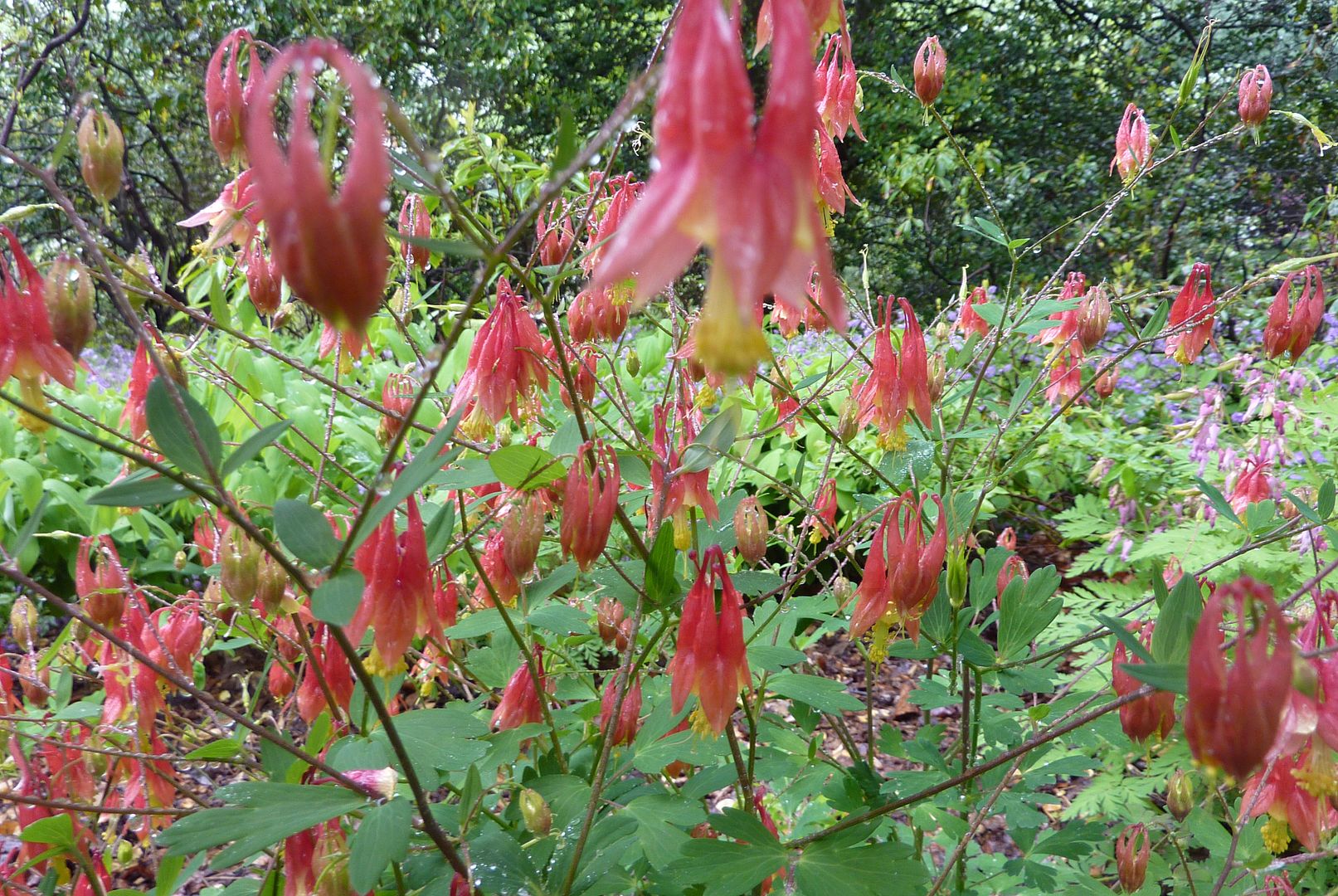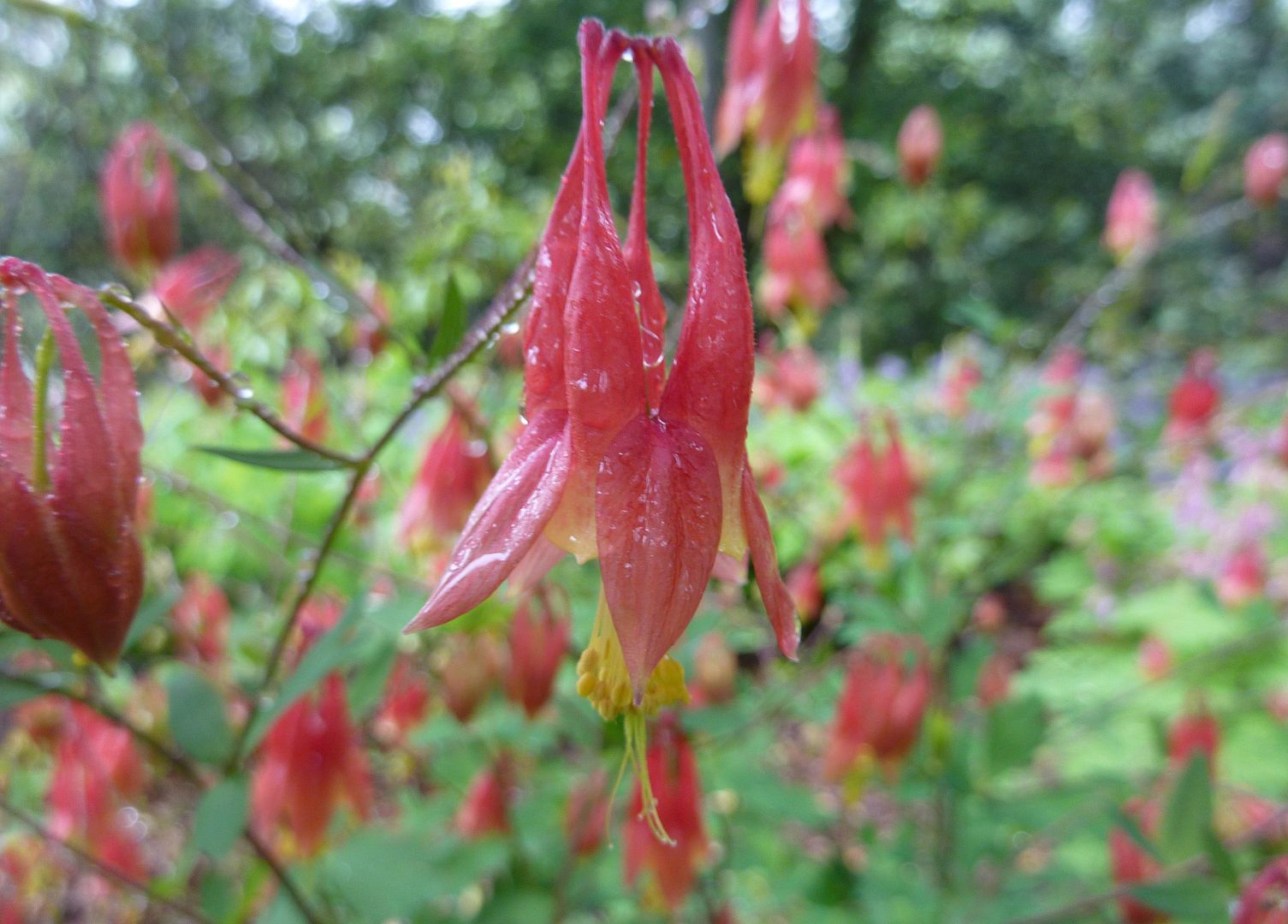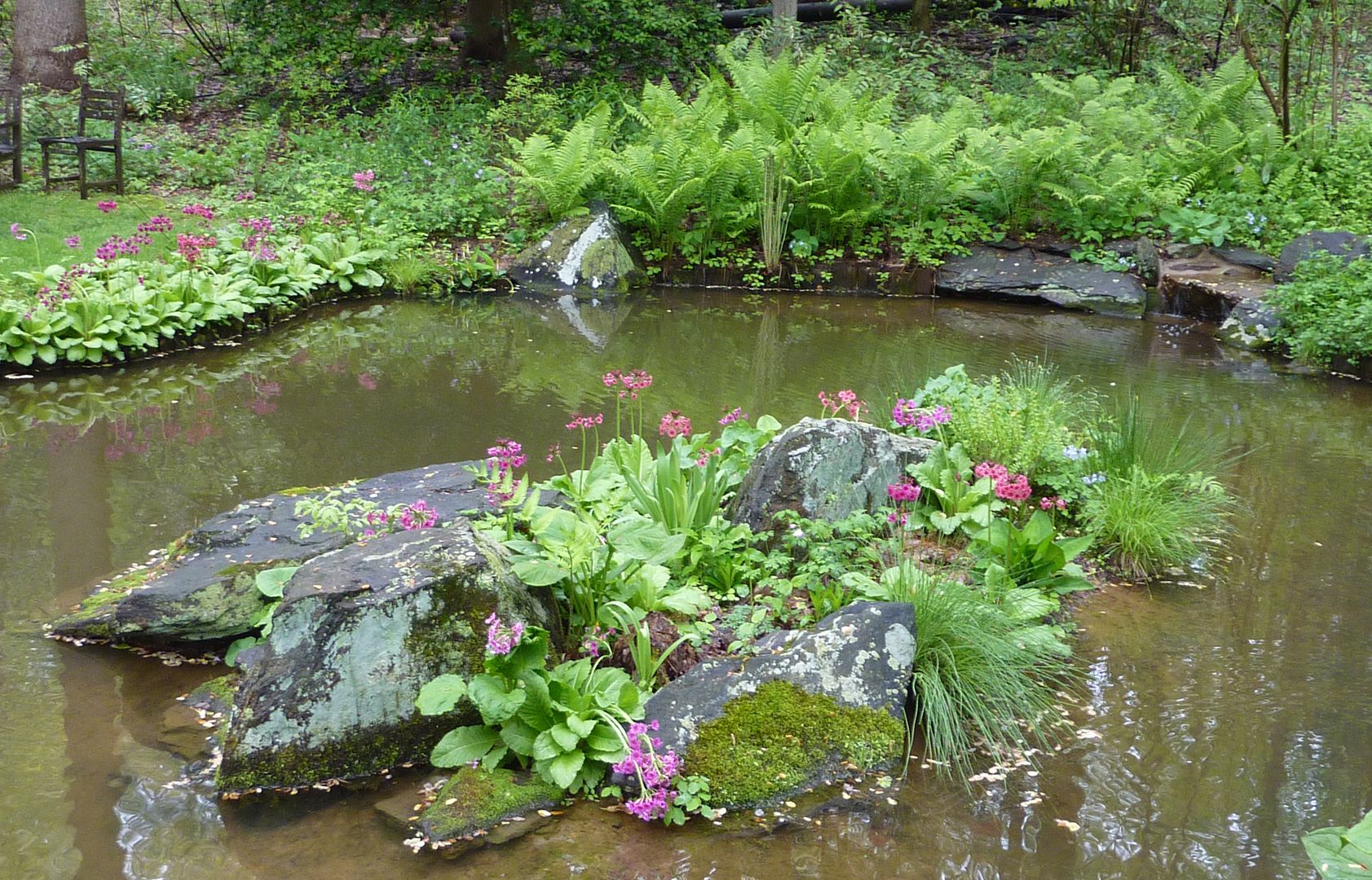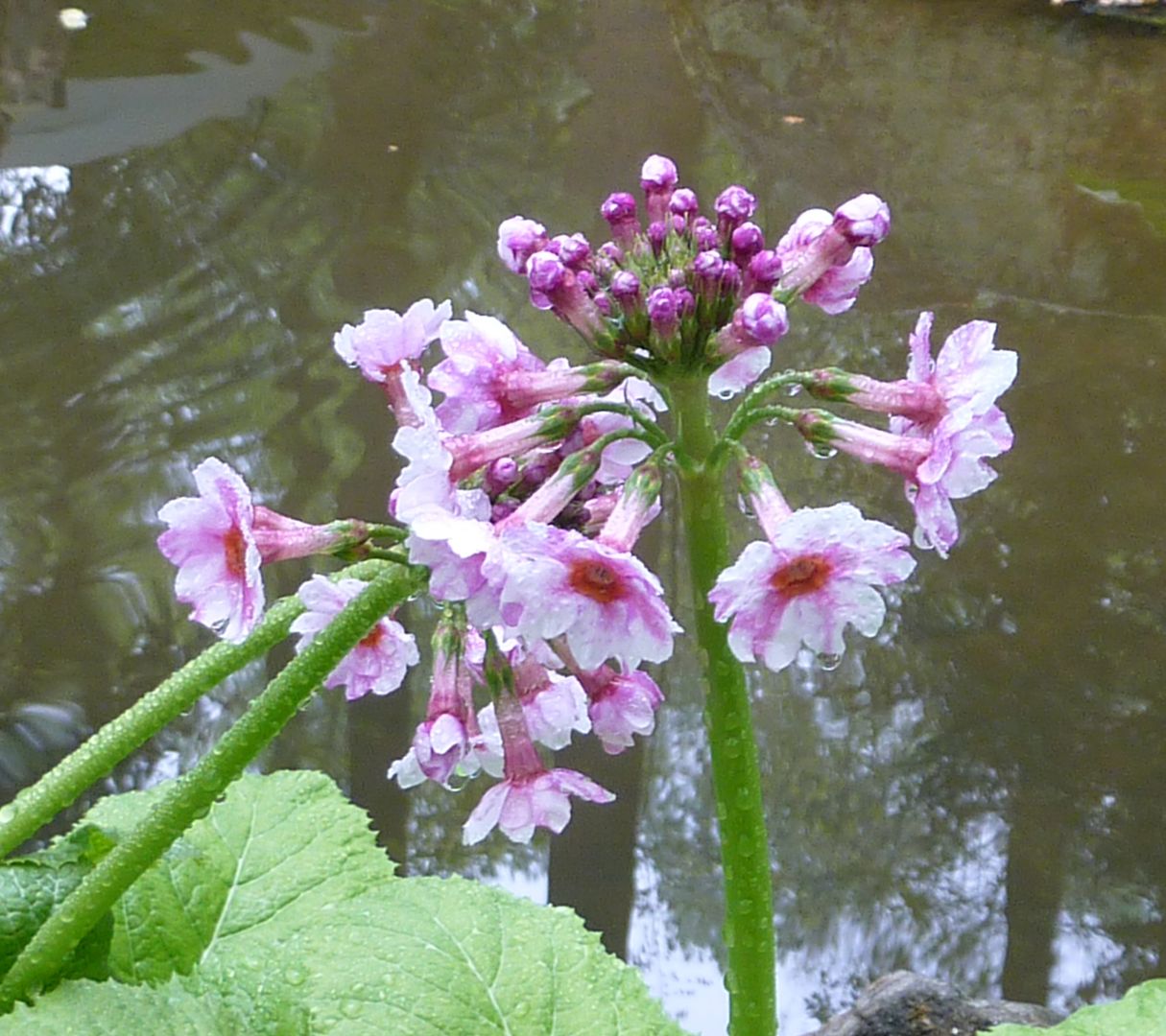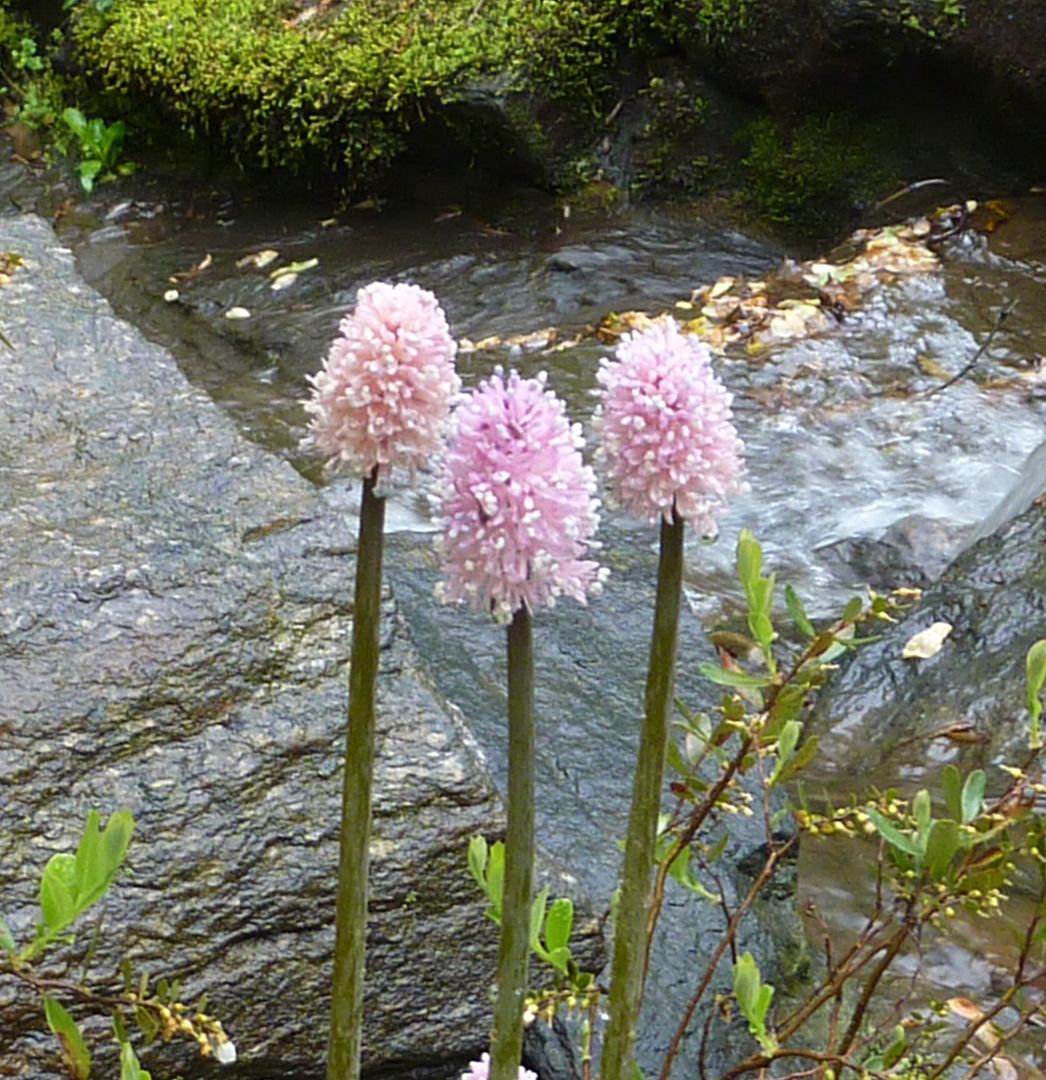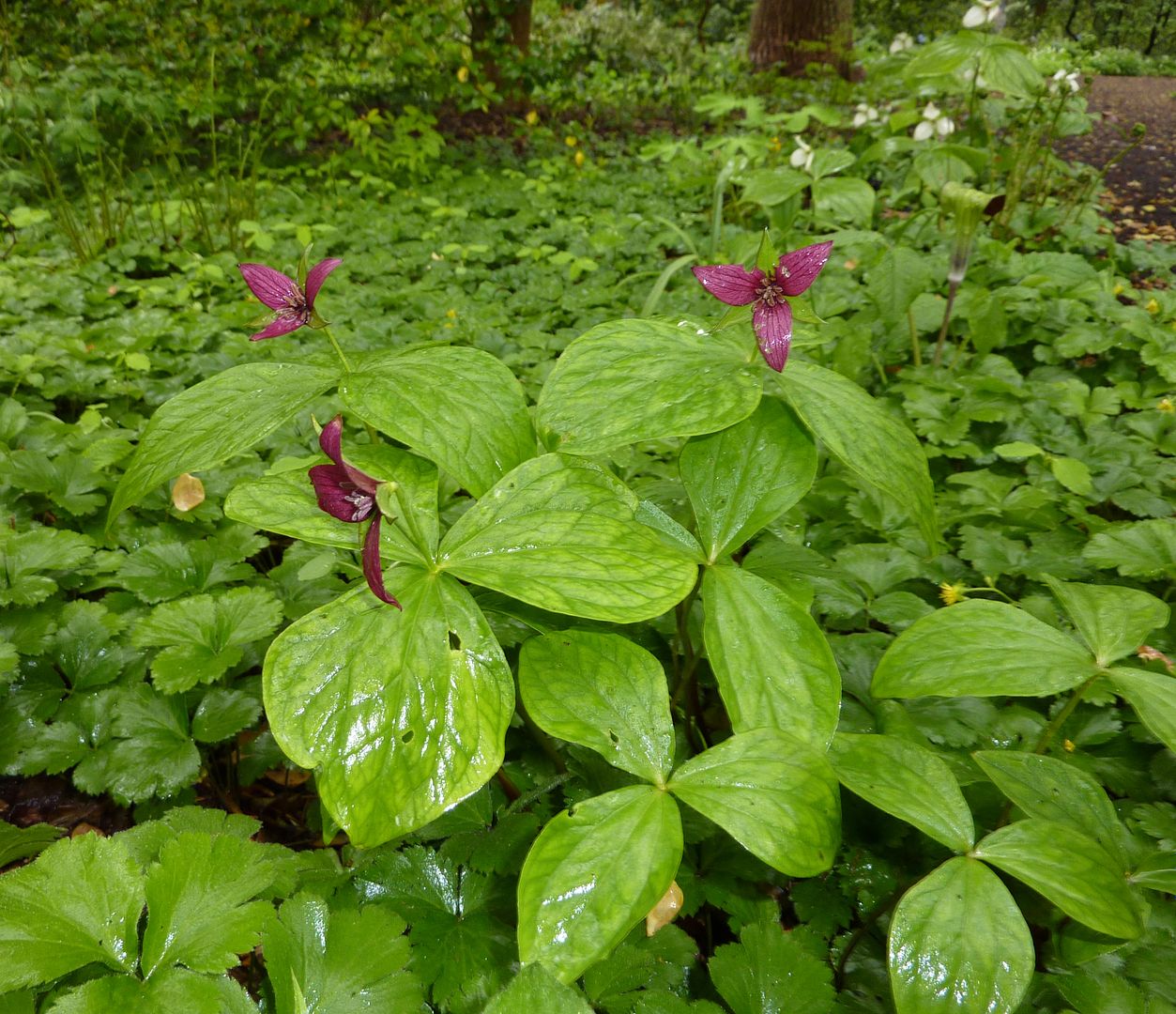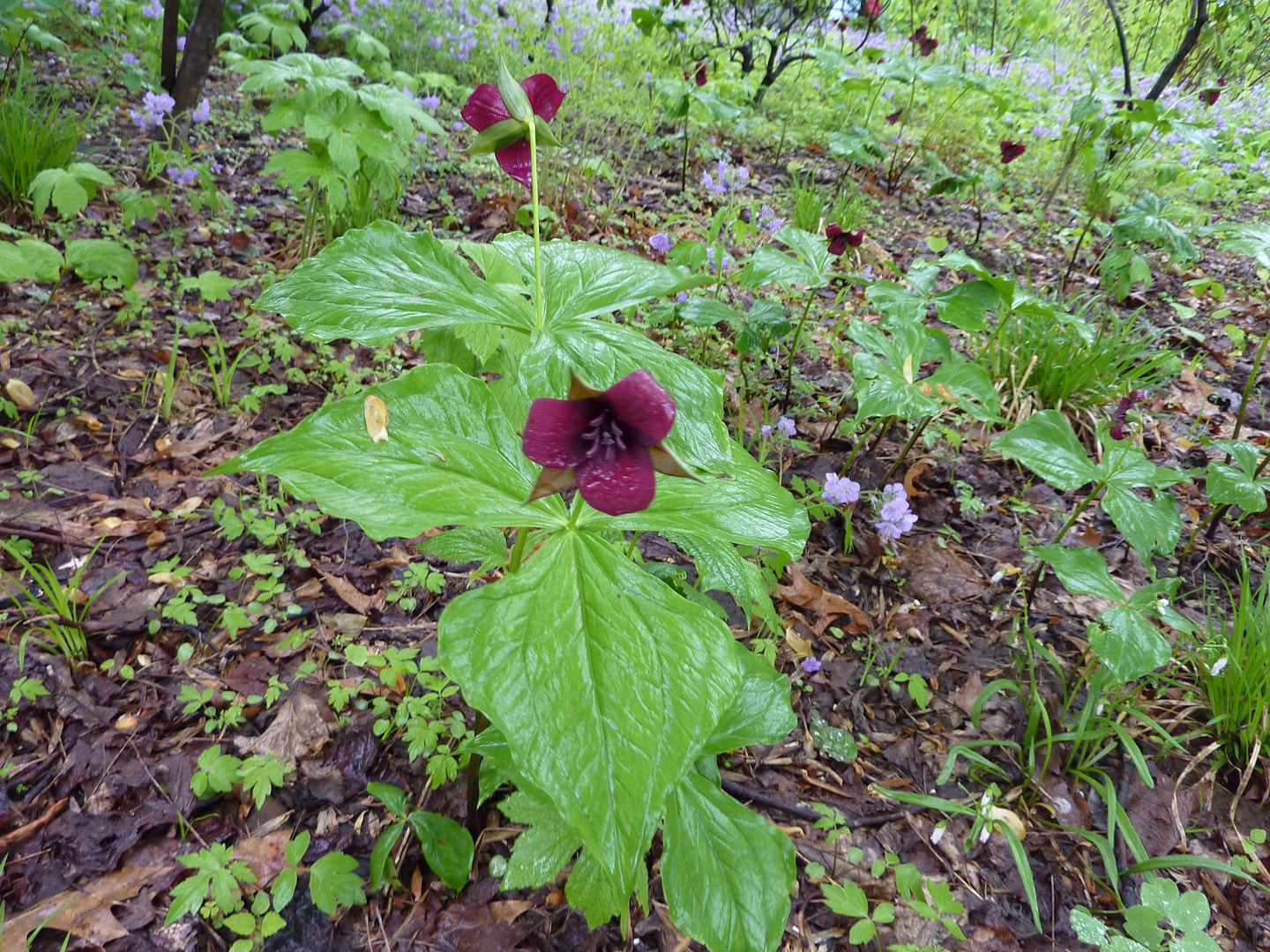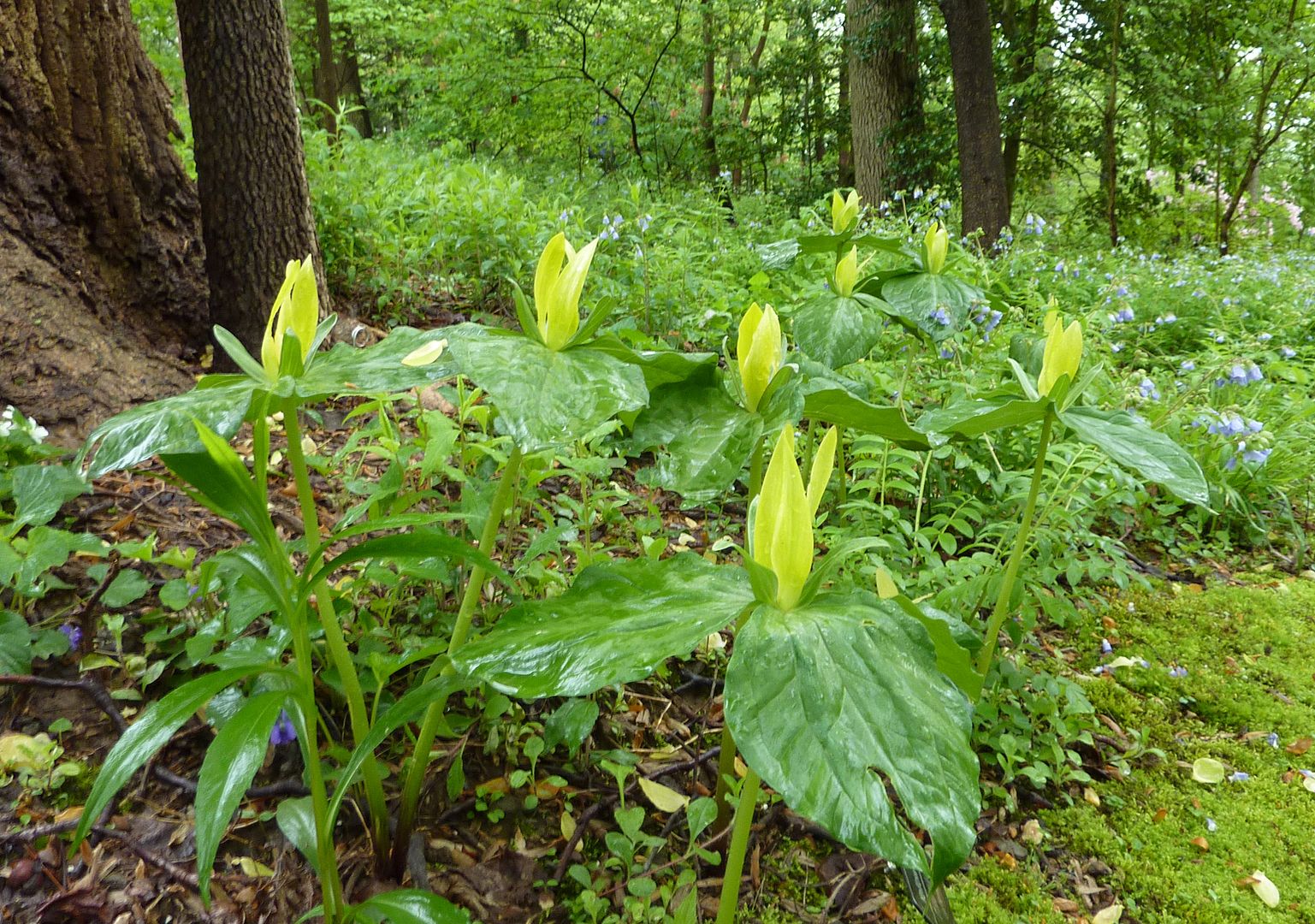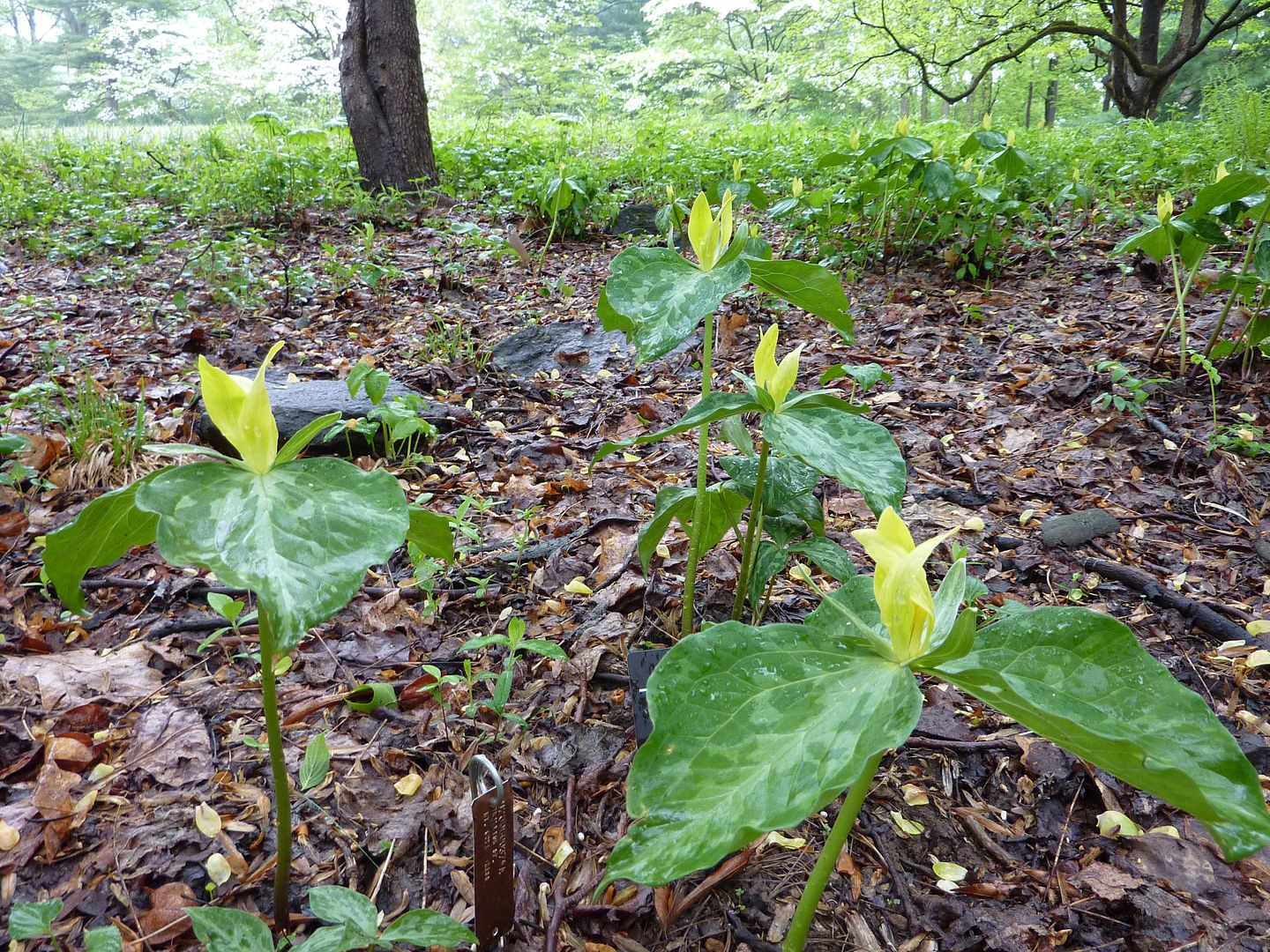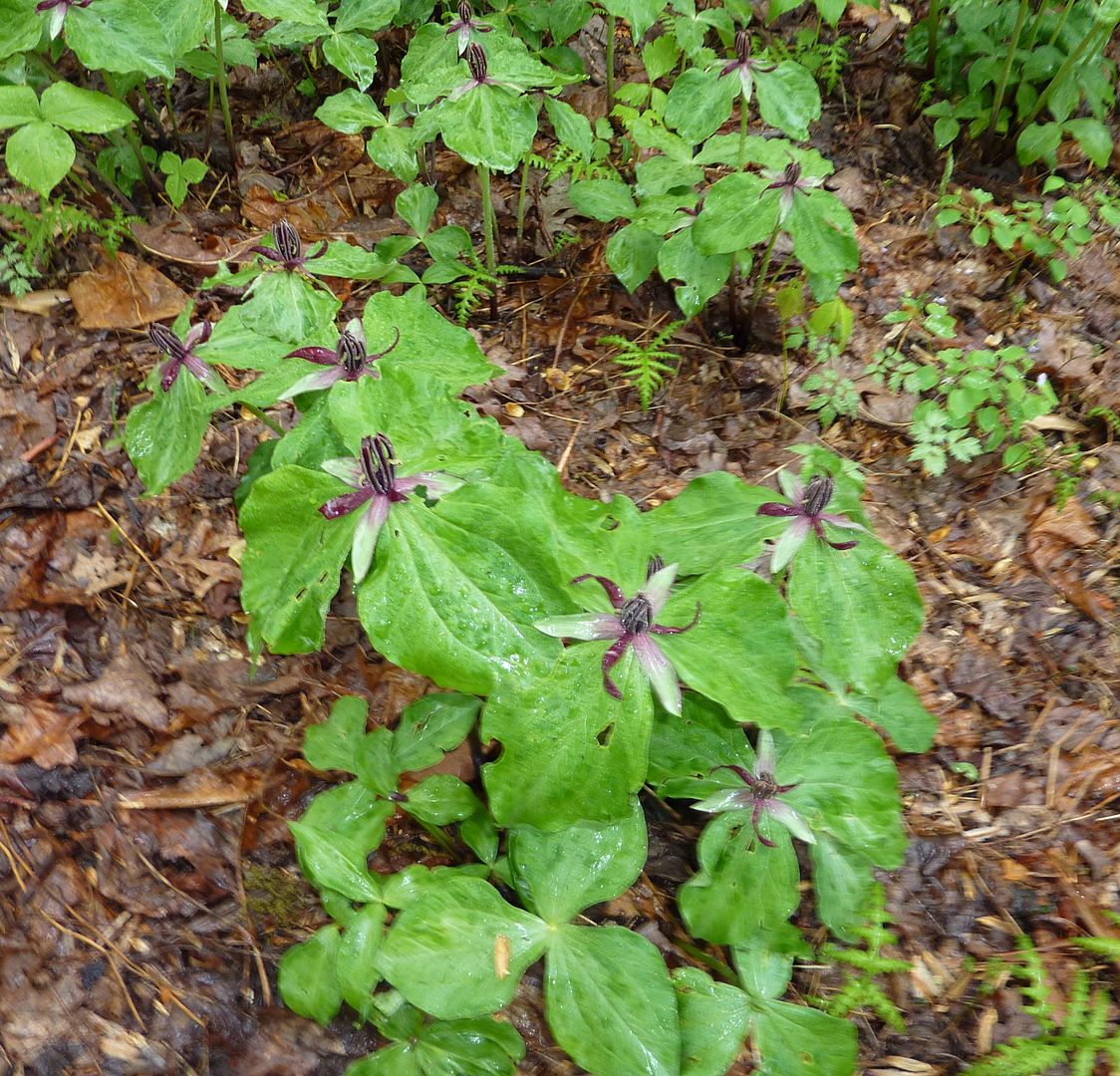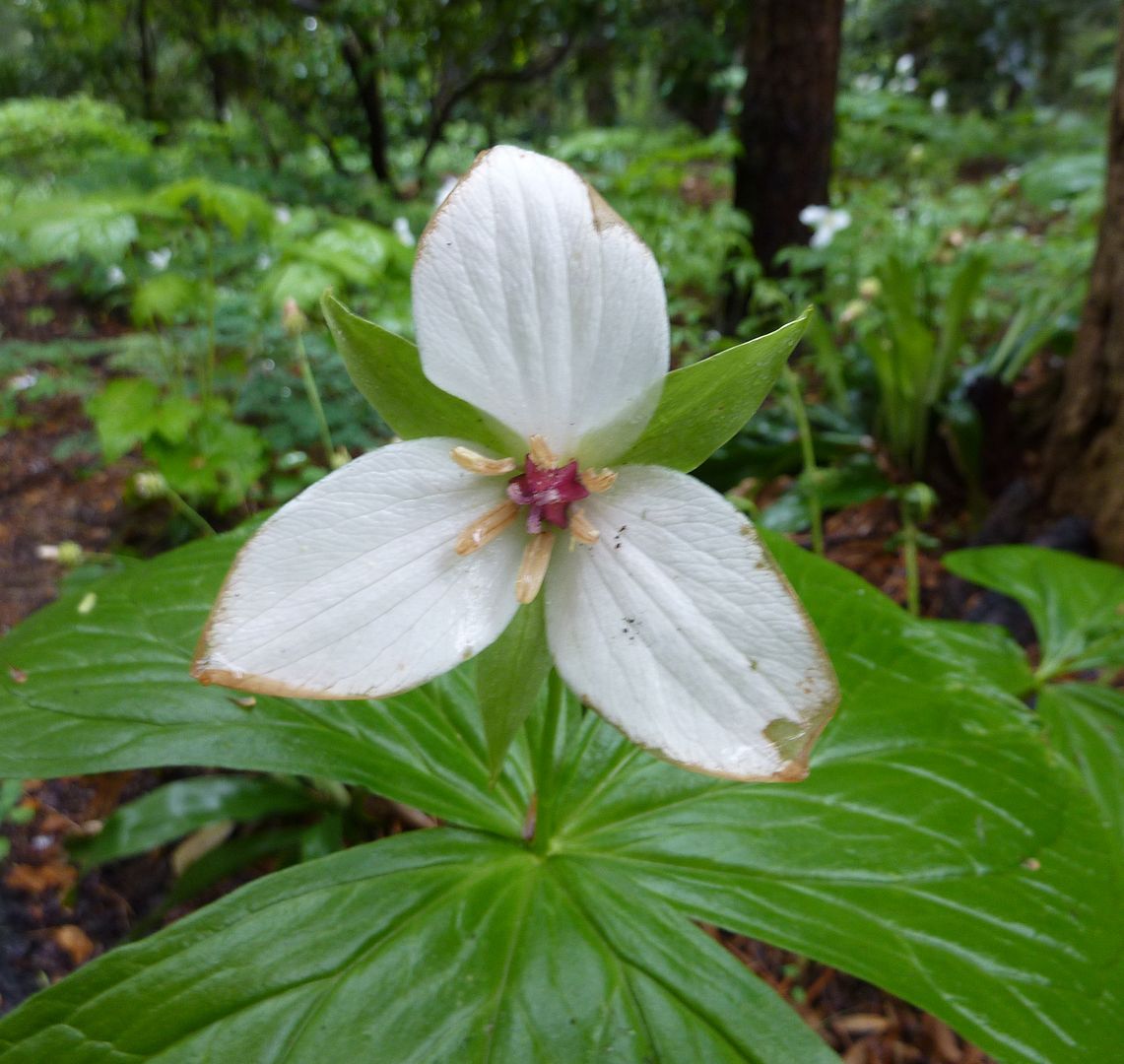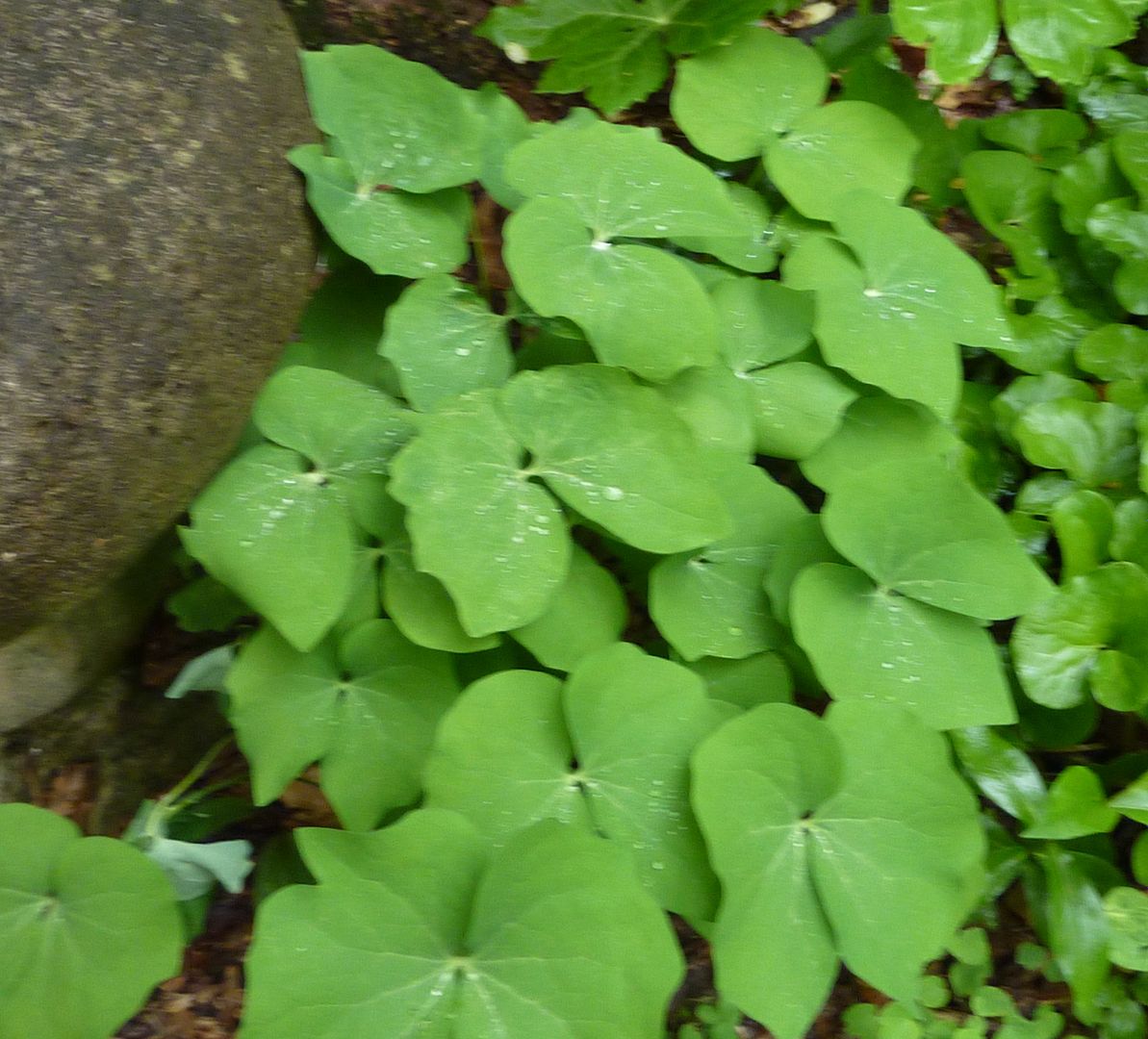Dogwoods blooming in a forest opening. Cornus florida is the most used native of the genus for it's wonderful huge flowers.
It also comes in pink and I've seen a deep red too. They usually grow at the forest edge but work great in the landscape. They're said to only grow 30' tall but I want to say I've seen taller. They don't necessarily grow that far out. Flowers grow as flat sheets and they layer.
On a good day these trees would be absolutely buzzing with bees. As it was raining the day I went there wasn't much going on.
The flowers are about 5 inches long. And they turn into nice berries over the summer.
Yellow Lady Slippers. I'm not certain on the species but they might be Cypripedium parvifolium. My understanding is these are very expensive and hard to grow. Supposedly they grow best where the soil is highest in organic matter. That's probably why they're said to grow in lines leading right up to a stump of a fallen tree.
Aquilegia canadensis, Native Red Columbine. This is among the easier plants to grow. I actually have it in my garden and it reseeds itself easily.
They don't flower their first year I don't think but they get bigger and bigger as years go on. This plant is often found growing in odd places such as stone covered hill sides.
Among the pond areas was a small island with lots of lovely looking plants growing on it. The star of the show was Primula japonica.
For some reason the USDA has these labeled as native but anyone can tell from the species name japonica that they are not. When I first herd the name I assumed this was a genus that crossed over as a few plant genera have to both Old and New World. That doesn't seem to be the case though. They're pretty all the same but not going in my garden. Identification thanks to Wildlife Gardens.
This plant is Helonias bullata. It's a threatened species. Considering the flower heads look like cotton candy it's no wonder why. All it takes is one deer to come along and nibble off the blooms for this plant to not reseed itself. Thankfully the property is gated in and deer aren't a problem. Identification thanks to Wildlife Gardens.
A trip to the Mt. Cuba Center in spring time wouldn't be complete without viewing the Trilliums.
Older plants grew up nice and tall and towered above most of what's growing around them.
The standard T. grandiflorum was a little bit past it's prime but that's not to say they're ugly to look at.
Flowers are long lived and T. grandiflorum in particular turns pink and dark shades of purple as it's flower fades.
The effect is very pretty especially when there are lots of them. Unfortunately I noticed this year there weren't as many of them. I believe they grow the plants in woodland settings and after developing a population they harvest them for sale in select nurseries. This is just speculation on my part but I'm fine with them making a little money. The one place they lacked was a gift shop to be honest.
Trillium luteum is another one of my favorites. The yellow green color of it's flower is a delight to see.
It also makes it easy to identify. Most of the time unless it's T. grandiflorum or T. erectum, I never know what I'm looking at.
Case and point. This is a patch of Twisted Trillium. T. stamineum and I walked right past them without a second glance. The petals along with being an interesting color are twisted and eventually curve. The effect is sometimes like looking at a wind far. It's another easy to ID one that I wish I'd bothered to put more focus on.
Even when Trilliums are spread out they make a nice effect. Especially the non sessile group ones that have the flower separated from the leaves by a nice long stem.
Twin Leaf, Jeffersonia diphylla, gets it's name for obvious reasons. The flowers are very short lived lasting maybe a day or two.
Seed pods develop easily though. It's likely the plant accidentally pollinates itself or else blooms would surely last longer. This picture was taken in my yard.
